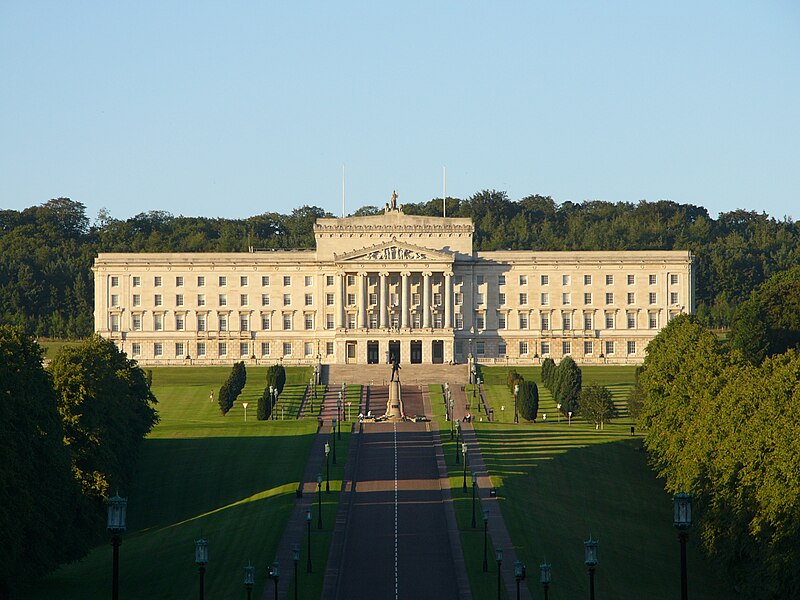Belfast, the capital of Northern Ireland, lies on the River
Lagan, which empties into Belfast Lough, and which flows through some
attractive green spaces on the outskirts of the city. The majority of the city is in County Antrim, with the rest in County Down. There has been a settlement here since the
Bronze Age, though the populated area was still small by the 12th
century, when the Anglo-Norman knight John de Courcy built a castle on what is
now Castle Street. This modest
conurbation put on a spurt in the 17th century when Arthur Chichester,
1st Baron Chichester of Belfast established a town which saw an
influx of Protestant English and Scottish migrants. By the 19th century the city had
become Ireland’s most important industrial city, with industries including
shipbuilding. The ill-fated Titanic was
built in Belfast, and the memory of her lives on to this day in the form of the
Titanic Quarter. It was in the early
1920s that Belfast became the capital of Northern Ireland upon the partitioning
of Ireland.
Just to the northeast of the central part of the city is the
area known as Sailortown, so called because during its time as a working-class
residential area from the 19th century until its redevelopment in
the late 1960s it was frequented by sailors from all over the world. The 1907 dock strike was started in
Sailortown by trade unionist James Larkin, and it spread from there to the rest
of the city, with carters and coal men getting in on the act. The area has its own website with some
old photos and memories of past times.
Belfast’s more recent history has been dominated by The Troubles. Being the capital, the city
has seen the lion’s share of the bombings, violence and general unpleasantness
associated with that period. However, I
am not going to dwell on this unhappy time, rather I want to celebrate the magnificence
of the city that has emerged from all this in more recent, happier times. The aforementioned Titanic Quarter would be
worthy of any modern, progressive city, with its glitzy apartment buildings,
restaurants, hotels and so on. Central
to this area is Titanic Belfast, a museum which tells the story of the famous liner in a realistic and interactive way. I have not been there but I did visit a similar
attraction in Cobh, Republic of Ireland, and found it fascinating, so I can
only imagine that the Belfast one is even bigger and better.
 | |
| Opening Day, Titanic Belfast, 31 March 2012 (81). Photo by Ardfern, via Wikimedia Commons. |
For plant lovers, the Botanic Gardens in the south part of
the city occupies 28 acres with features such as a Palm House and a Tropical
Ravine House. The Gardens occasionally
host concerts and festivals. Fans of the
TV series The Fall may find the Gardens familiar, as they are one of a number
of Belfast locations which feature in the storyline. The Crumlin Road Gaol is no longer used as a
prison, having ceased that function in 1996, but it holds tours and
events. One of the most familiar
landmarks in Belfast is the Belfast City Hall with its green copper domes, which is open to visitors and offers tours. The city’s St Anne’s Cathedral has lent its
name to the Cathedral Quarter, probably the liveliest district in the city at
night, with a host of restaurants, bars, nightclubs and hotels for night owls
to discover. The imposing Parliament Buildings, commonly known as Stormont, are in the Stormont Estate to the east
of the city. The Estate also houses
Stormont Castle, a hefty pile reworked in the Scottish Baronial style in the 19th
century which hosts meetings of the Northern Ireland Executive.
 | |
| Stormont. Photo by LukeM212, via Wikimedia Commons. |
This is just a sample of the attractions on offer in
present-day Belfast. Needless to say a
vibrant city like this has lots going on.
The Cathedral Quarter has its own Arts Festival, and also hosts events
such as the Festival of Fools and Belfast Pride. For a list of events in the city follow this link.
Map of the area
Map of the area
No comments:
Post a Comment